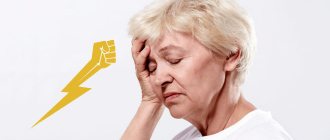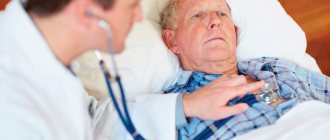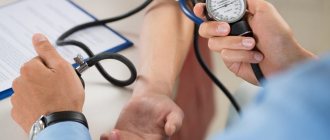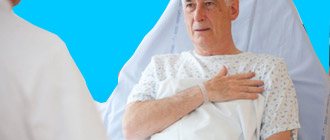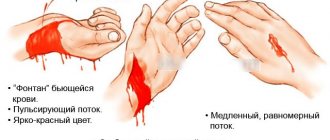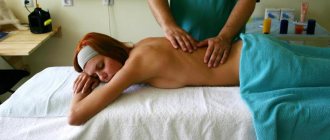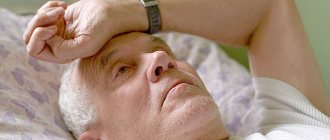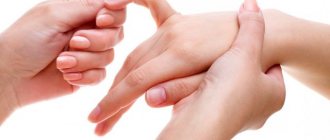Types of stroke and their critical moments
In medicine, there are 2 types of stroke and the third is mixed, and it has signs of both the first and the second. The danger of this circulatory disorder is that it is irreversible, because we are talking about the vessels of the brain. The possibility of recovery is influenced by the patient’s age, the presence of additional health problems, and lifestyle.
Depending on the type of disorder, different periods of stroke are distinguished. The assistance provided at one time or another influences further recovery. Hemorrhagic stroke is more difficult to treat. Regardless of the stage, the violation carries great danger and consequences.
Hemorrhagic stroke
A hemorrhagic stroke is characterized by the rupture of a blood vessel or vessels, which causes blood to leak into the brain. Depending on the location of the rupture, this type of stroke is divided into several types: parenchymal, ventricular, subarachnoid, subdural, epidural, and mixed.
Regardless of which variety is identified, in 40% of cases it will lead to death if help is not provided. The most dangerous periods of hemorrhagic stroke are the first day on which the clinical picture begins to appear and two weeks after that. At least 85% of deaths occur during this period.
Helpful information
The most dangerous days for this type of violation are the first, seventh to tenth, fourteenth and twenty-first.
On these days, a relapse may occur. After a month, this risk decreases significantly.
Hemorrhagic stroke occurs much less frequently than ischemic stroke, but despite this, it carries great danger and consequences.
Ischemic stroke
This is the most common type of circulatory disorder in the human brain, which is characterized by blockage of blood vessels. As a result, oxygen starvation occurs and neurons die. Blockage of the lumen of a vessel occurs due to a blood clot, an atherosclerotic plaque.
This condition is characterized by a process in which one unpleasant symptom is replaced by another. But the faster it is completed, the fewer neurons that are responsible for many body functions will be affected.
The most acute period of ischemic stroke includes the first day, when there was a pronounced clinical picture. Afterwards, the third, seventh, tenth are considered dangerous days. But even though these days will pass without complications, the possibility of relapse cannot be ruled out. A recurrent stroke is possible even a year after the first.
Despite the high prevalence of this type of disorder, it is extremely difficult to get rid of the consequences. This will take years of rehabilitation.
What determines the speed of recovery?
According to research by the Scientific Center for Neurology of the Russian Academy of Medical Sciences, the timing and extent of the return of lost skills, as well as prognoses for future life, are directly related to the form of stroke suffered by the patient, the size of the lesion in the brain tissue, the age of the patient and the usefulness of the treatment provided to the victim. Rehabilitation after a stroke is never easy, since cerebrovascular accident always entails many different negative consequences that appear several years after the stroke.
The severity of a stroke affects recovery time
The recovery period can differ significantly from person to person in terms of timing and rate of return of skills. Patients who have suffered a major stroke experience serious disorders of the most important functions, so it will take a lot of time to regain lost skills, and even with the maximum implementation of the prescribed rehabilitation program, the prognosis is in most cases unfavorable. The greatest difficulties are associated with the full return of speech and motor function - relatives who devote a sufficient amount of time to special activities with the patient can help reduce the time.
In young people with a small lesion of the brain, in the absence of concomitant pathologies and careful adherence to medical instructions, the period of complete recovery passes quickly - it can take no more than two months, and the prognosis for a complete recovery will be favorable.
Periods of stroke
A stroke has more or less dangerous periods. But this applies only to the ischemic variety. The presented cerebral blood supply disorder is divided into 5 main stages:
- acute;
- spicy;
- early recovery;
- late recovery;
- residual phenomena.
Each of the presented periods has its own characteristics of manifestation. Depending on it, a set of actions is selected that is aimed at improving the patient’s condition.
In order to know how to ease the well-being of the victim, it is worth familiarizing yourself with each period of a stroke separately.
The most acute period
The presented period lasts on average 4 or 5 hours. It begins with the first sign of a stroke. The first three hours in medicine are called the “therapeutic window.” This means that it is during this period that it is necessary to provide medical care to the patient. If this does not happen, complications of varying severity will occur. The more time has passed since the onset of the disorder, the worse they will be, even death.
In order not to miss this most acute period of ischemic stroke, it is worth knowing how it manifests itself. There are simple and clear tests that can be used to check for the presence of a disorder:
- a person cannot smile normally; when asked to do so, he gets a crooked smile, in which one of the corners of the mouth is lowered. This indicates that one part of the face is paralyzed;
- the patient cannot say anything. This happens if the part of the brain responsible for speech has been damaged. This can also occur when there is a failure in thinking;
- when asked to raise both arms, the victim cannot do this, since one of the limbs “does not listen” to him;
- a protruding tongue turned to one side also indicates a stroke;
- a person cannot walk exactly in a straight line due to lack of coordination;
- If the patient is conscious, you can ask him to write a message. This method can be used if no other signs are noted. If a disturbance occurs in the brain, instead of a coherent message there will be an incoherent set of letters, and the person himself will not understand this.
Acute period
The acute period of ischemic stroke occurs two days after the first period. It has time restrictions and is 14-20 days. All this time, the victim has been in a medical facility for treatment. Therapy includes taking medications. If we are talking about a complex form of the disorder, the period of stay in the hospital is extended to a month.
The therapeutic approach during this period is aimed at:
- elimination of tissue edema, inflammation processes, and also to improve blood supply to the brain;
- normalization of the cardiovascular system, maintaining it and blood pressure;
- elimination of negative symptoms that accompany the post-stroke condition;
- preventive work aimed at eliminating relapse.
After the presented measures have been carried out, specialists move on to restoring the body and its functions that were lost due to impaired blood circulation in the brain. The next stage after acute is called subacute and lasts 2-2.5 months.
Early recovery period
The early recovery stage begins 3-6 months after the onset of the first signs. The recovery period that was previously established is adjusted if necessary. Drug therapy is also ongoing.
In order to fully eliminate the consequences of the most acute period of ischemic stroke, it is necessary to use an integrated approach to treatment. Its main stages include:
- taking the necessary medications, if indicated;
- going to massage, acupuncture, and other procedures that help restore the functionality of the body;
- conducting classes with a speech therapist to eliminate speech defects;
- exercises on simulators with equipment. To restore muscle strength and coordination.
Efficiency is determined by the systematic implementation of the presented procedures. Ignoring these treatment options will inevitably lead to disability.
Late recovery period
This period lasts from six months to a year. If the patient has been exercising, then by this time he will already have significant improvements. If he carried out everything according to plan, then after a year the person has the opportunity to move independently and take care of himself.
During this period, speech and fine motor skills of the hands are restored. Unfortunately, those nerve fibers that were damaged during the stroke will not recover, but those that surround them adapt and help to live a new life. They take over the functions of dead neurons. For this reason, you should not stop doing exercise therapy and socially adapt to your new life.
Period of long-term consequences
This period is no longer limited in time, but begins a year after the attack. This stage is characterized by the fact that the work being carried out is aimed at consolidating the results that were obtained earlier.
Here, increased attention is directed to preventive work that will reduce the likelihood of relapse. The patient must adhere to a diet, undergo regular examinations and undergo treatment at a sanatorium at least once a year.
Despite the work done, it is almost impossible to achieve one hundred percent recovery. This happens only 10% of the time. But this does not mean that you should not take care of yourself. Since this will allow a person to do many things independently, including self-care, performing simple actions without family, friends and staff.
In addition, during this period it is worth seeking help from a psychotherapist who will help improve psychological health, which has also suffered.
What is possible, what is not
Read more…
First of all, you need to understand that the features of the diet depend on what kind of stroke occurred - hemorrhagic or ischemic .
- ✅ In case of ischemic stroke, animal fats that provoke the formation of atherosclerotic plaques on the walls of blood vessels should be avoided.
- ✅ If you have hemorrhagic stroke, you will have to give up salt, which increases blood pressure. In addition, coffee, tea and other invigorating drinks are prohibited.
Recovery time and prognosis
It is difficult to say exactly how long it will take to recover from the most acute period of an ischemic stroke. This process is influenced by the type of stroke suffered, the age of the victim, as well as the size of the affected area of the brain and the characteristics of therapy.
This is also influenced by the patient’s mood for the result. Often after a stroke, patients become depressed, and this complicates the treatment process. Since in this case not only physical health suffers, but also the human psyche.
Helpful information
It is possible to give any predictions only after treatment and the start of rehabilitation. It is impossible to predict how this or that person will behave, so everything depends on the effectiveness of the work done, the mood of the patient and the relatives who will care for him.
A stroke unsettles both the victim and those around him. But in order to be able to return to your previous life, it is worthwhile to engage in rehabilitation and, even after achieving the effect, not to abandon restorative measures.
First aid
The most important thing during a stroke is not to waste precious time.
- If the patient has lost consciousness, then he needs to be turned on his side, unbutton the collar of his shirt, put something under his head, put a napkin folded several times between his teeth and wipe away the foam that comes out of the mouth so that it does not get into the respiratory tract.
- Do not use ammonia (it can cause respiratory arrest) or carry the patient.
- If a person’s pulse cannot be felt, the heart has stopped and breathing has stopped, chest compressions and mouth-to-mouth artificial respiration should be immediately performed.
Remember!
Emergency measures are especially relevant in the first 3-8 hours after a stroke occurs, so try to do everything quickly!
It is forbidden!
Read more…
Fatty meat, fatty river fish, fried, spicy, smoked and salty foods, canned foods, sweets and baked goods.
Remember!
After suffering a stroke, nutritionists give advice - to adhere to the Pevzner dietary table No. 10. The main principles are a general reduction in calorie intake, a significant reduction in the amount of light carbohydrates, and a reduction in animal fats and salt for at least three months after the stroke. But there should be more protein and fiber in the diet.
